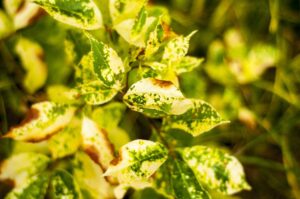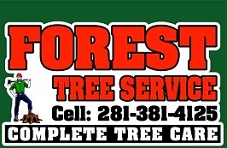
We all want our trees to grow to be tall, beautiful, and healthy. But unfortunately, sometimes trees fall ill just like we do, despite our best efforts. The good news though is that not every disease has to be a death sentence for your trees. If you can recognize the signs of tree sickness as soon as they appear, you can call a professional to take action to save them (like calling a doctor!).
Let’s take a look at the most common diseases that spread in Texas trees, so you know what to watch for.
1) Hypoxylon Canker
Many native Texas trees, such as pecan, oak, elm, and sycamore, are common victims of this quick-killing, incurable disease. This disease causes peeling bark, branch dieback, crown thinning, and dark-colored spores. It attacks weak trees, usually during a drought. Since there is no cure for hypoxylon canker, your best weapon against it is prevention.
2) Oak Wilt
Oak wilt, as the name would suggest, can develop in any oak tree, but red and live oak are the most susceptible. Signs of oak wilt include the browning and dropping of leaves, and then death. It spreads to other trees via root grafts and nitidulid beetles, so it’s best to have an arborist come in to try to restore health to any of your trees that show signs of the disease.
3) Fire Blight
Unlike a majority of other tree diseases, fire blight is a bacterial disease. It usually attacks fruit trees, especially apple and pear, causing foliage and blooms to blacken rapidly (giving them a scorched look), shoot tips to bend into a hook shape, and cankers to form on branches. In the winter, these cankers hold the disease in place, then come spring it oozes out and spreads. Fire blight can sometimes be removed with careful expert pruning.
4) Bacteria Leaf Scorch
Bacteria leaf scorch (BLS) is another bacterial disease, but this one is spread via insects, like leafhoppers, in Texas species like elm, boxelders, sycamores, and oaks. BLS chokes the flow of water between the tree’s roots and leaves, resulting in a yellow band between green leaf tissue, scorched leaf tips, branch dieback, and sometimes early leaf defoliation. Symptoms typically appear from mid to late summer. Trees that are infected with BLS usually need to be removed from your property.
If you suspect one or more of your trees may be plagued by one of the diseases above, call in the expert arborists at Forest Tree Service. We’ll do everything we can to save your trees and, if we can’t, we’ll perform a clean, safe removal. We also offer tree pruning and care to keep your trees healthy and help ward of disease in the first place.
Give us a call at 281-381-4125 to learn more about our services!
